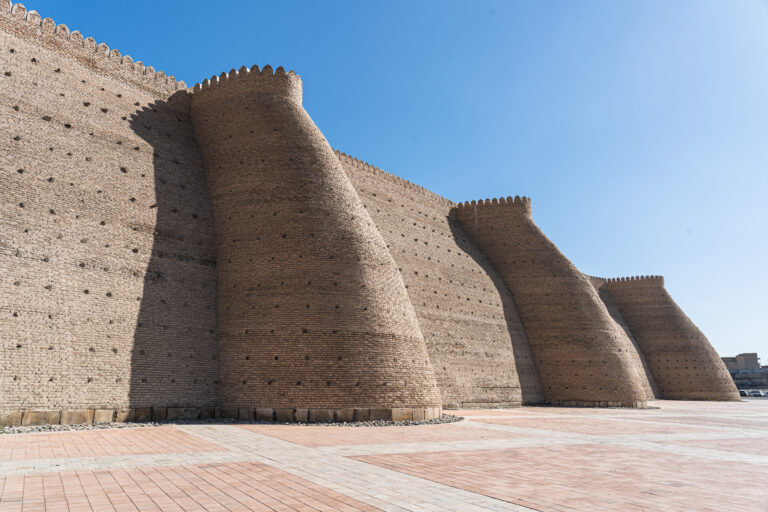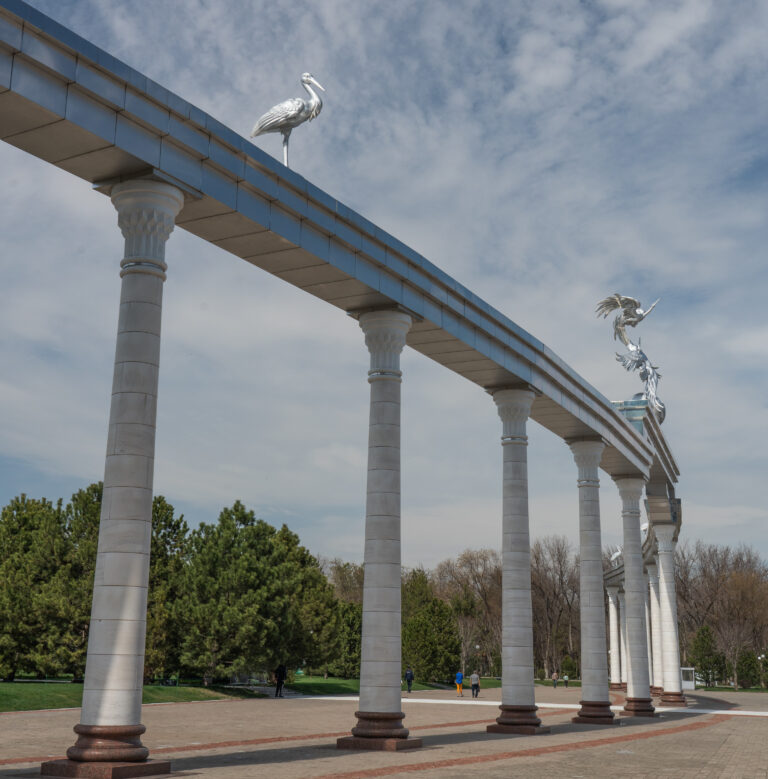The Silk Road City of Samarkand
The Silk Road city of Samarkand conjures up images of ancient caravans entering an exotic oasis abound with spices, silks, and imposing architecture. Today, those elements still remain true. It is a large city, and even its monuments are on a grand scale.
The city was founded in the 7th century BC. As has been the history of Uzbekistan, a multitude of invaders destroyed and rebuilt the city over the centuries. Along with the Mongols, the Timurid’s were amongst the most ruthless of the invaders. Their leader, Timur, was born near Samarkand in the city of Shahrisabz.
Samarkand’s golden era came when Timur made it his capital in the 14th century. Many of the city’s most important monuments were built under the command of Timur or his son Ulugbek. The treasures that came from the Timurids destruction and looting of distant cities helped to build Samarkand’s opulence.
The city became an Uzbek Khanate in the 15th century, and surprisingly, by the 18th century Samarkand had become an abandoned city. Following yet another invasion, this time in the 19th century, Samarkand found a new prosperity as a central railway point for Russia’s expanding imperial interests.
During Soviet times and since independence extensive development has raised Samarkand to the heights of a modern Central Asian city with a wealth of well-restored historical monuments. As has been the case throughout more than 2500 years of invasion and development, reconstruction is not always true to origin and subject to the liberties of the new regime. At least there has been restoration for new generations to enjoy!
The Registan
The Registan is an enormous and magnificent complex of three madrasahs (religious schools). As you look toward the Registan, to the left is the Ulugbek Madrasah, to the right is the Sher Dor or Lion Madrasah, and in the centre to the rear of the square is the Tilla Kari with its gold and lapis interior. I stayed a stones throw from the Registan and so had the luxury of passing and enjoying the breathtaking complex several times a day. Lit up at night, the Registan is especially majestic. The Ulugbek Madrasah, as the name suggests, was built under the command of Timur’s son at the beginning of the 15th century. The other two Madrasah’s were not added until the 17th century.







The Bibi-Khanym Mosque
The wide boulevard from The Registan towards the Bibi-Khanym Mosque is flanked with restaurants, shops and hotels, occasional benches, and like most of Samarkand is spotlessly clean. Timur ordered the building of the mosque at the beginning of the 15th century. Love, betrayal, earthquakes and Soviet occupation saw the Bibi-Khanym Mosque follow a long journey to reach its detailed and beautiful form today.


Timur’s Mausoleum
Timur’s Mausoleum stands in the Gur-e-Amir, a lone building on the edge of the Russian area of town. The surrounding area sports smart new developments that reveal a city on the rise.


A Corridor of Mausoleums
The Shah-i Zinda is a corridor of mausoleums mostly built for important figures under the command of Timur and Ulugbek from the 14th and 15th century. Although its history stretches long before then and tombs have been added even into the 19th century. The tile work is spectacular and the close proximity between these enormous mausoleums is overwhelming.


The Ulugbek Observatory
A short taxi ride, or a long walk from the centre, is Ulugbek’s Observatory. The enormous arc is well-preserved, and a basic structure built around it gives an idea of the ground size but not its original height. There is a model in the Registan that gives an idea of the enormity of the once thirty-metre high tower of the observatory.






